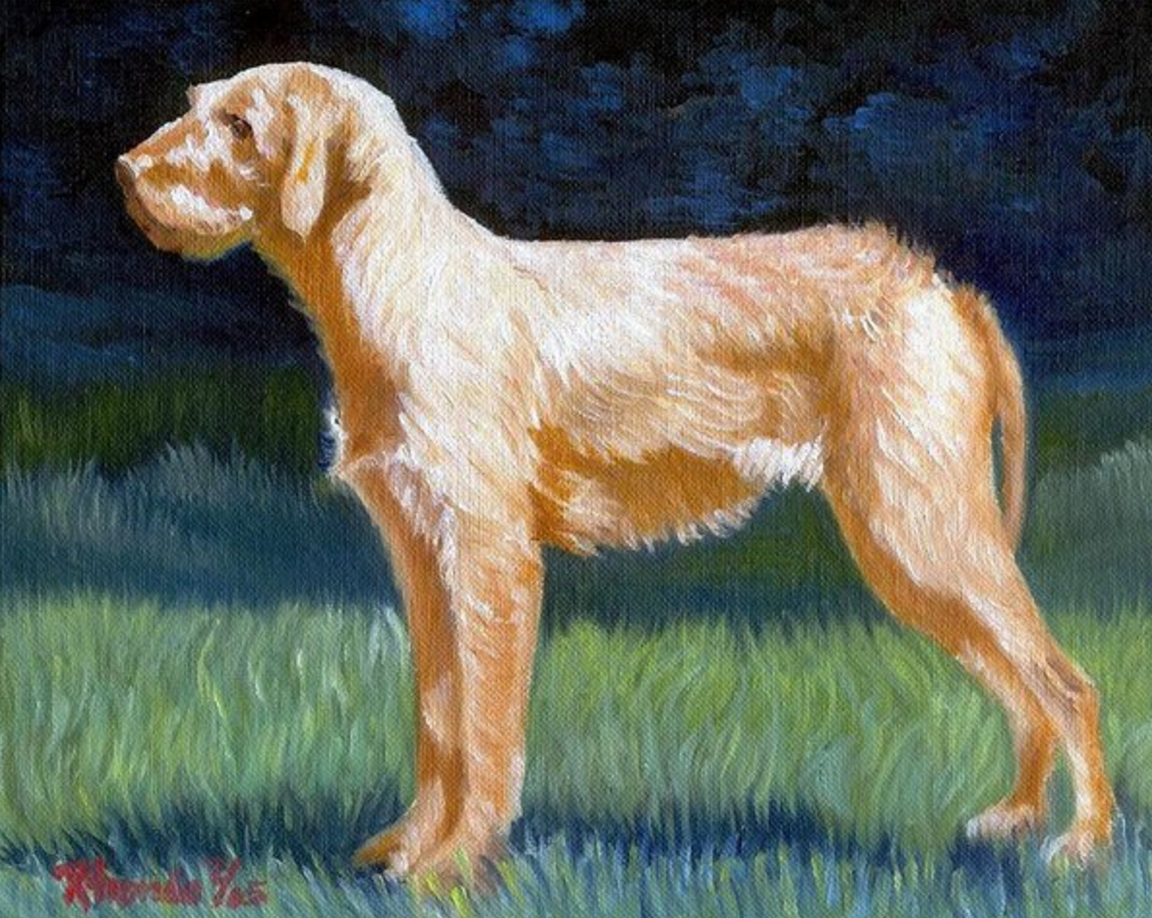
We wouldn’t be dog people if we didn’t debate the merits of our respective breeds (How does the old joke go? The only thing three dog people can agree upon is that the third person is doing it all wrong). Acknowledging this about ourselves frees us up to discuss the debate among austringers about the best breed of dog for their sport.
Huh? Austringer?
The use of dogs to locate game for hawk or falcon is very ancient, and austringer (or hawker) is the correct term for falconers who fly short-winged hawks as opposed to long-winged falcons. In that world, there seems little debate that the goshawk is the ultimate hunting bird. It has an explosive acceleration that allows it to catch a pheasant or a galloping hare, but if the bird is to catch its quarry, a good dog is helpful, and the decision about which breed to choose comes down to each falconer’s individual choice.
Many austringers believe that pointing breeds are best. A good, solid point from the dog allows the austringer to approach the quarry close enough to be able to release their bird to give it a chance of success. The flight of the hawk is judged by its length and quality (a kill isn’t vital), so the bird is cast from the fist at a range that gives a sporting chance to its quarry (from The Field).
A hawker’s attention is mainly on their bird, so many austringers prefer a dog marked with white because it’s as easier to spot. Among other austringers, German Shorthaired, German Wirehaired Pointers, and Brittanys, however, are the most popular breeds because all three have solid points, and all three are passionate, reliable hunters. Again from The Field: “The last thing an austringer or falconer wants is a dog that retrieves (the image of a pointer with a goshawk in its jaws is the stuff of nightmares) so, in theory at least, this makes training the dog somewhat easier.”
At least one austringer, however, extolls the virtues of the Wirehaired Vizsla in an article you can read here.
Unlike flying two goshawks at the same time (which is a huge no no since one bird might try to kill the other), it’s entirely acceptable to run two or more dogs at once. If one dog comes on point, then the second dog is expected to honor that point by backing it. Ultimately, however, the bird’s flight is far more important than the dog’s work. However dazzling the dog’s work is, her hunting is a means to an end.
Hungarian Wirehaired Vizsla Dog Portrait by Olde Time Mercantile. Find and support this artist’s work here:

Interesting. All of the videos and photos I’ve seen of falconry with dogs shows sighthounds. Are those the long-winged birds? I wonder what causes the difference in hunting style when combining dogs and birds.
Ferrets are also worked with dogs, usually terrier, I think, in another example of using two species at the same time to aid the hunter.
Sometimes two species work together to hunt without the guidance of humans. I once watched a coyote and a badger hunting ground squirrels together for 45 minutes from an observation tower set up to monitor a colony of marmots. They were clearly staying together. The badger hustled to keep up and sometimes the coyote stopped and waited for the badger, looking over his shoulder. At times the badger was practically underfoot.
I didn’t see a successful hunt but the regular observer had. They didn’t share the kill. The explanation for this behavior is that cooperation increases the success for both participants. The badger’s digging flushes the squirrel out a back door where it is caught by the coyote. Other times the coyote’s presence at the back door prevents the squirrel from bolting and it is caught underground by the badger.
That is amazing!